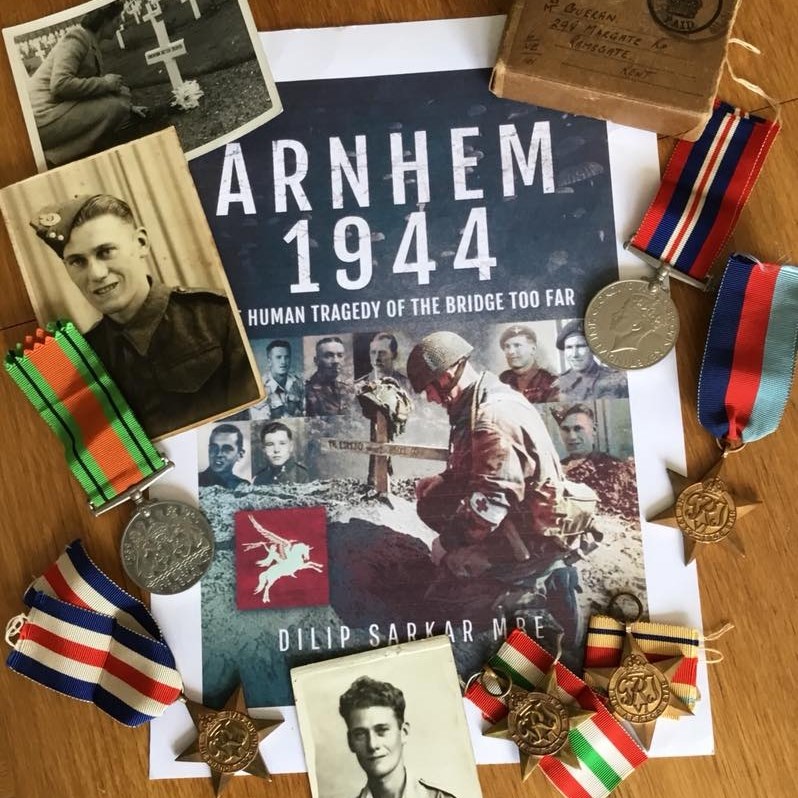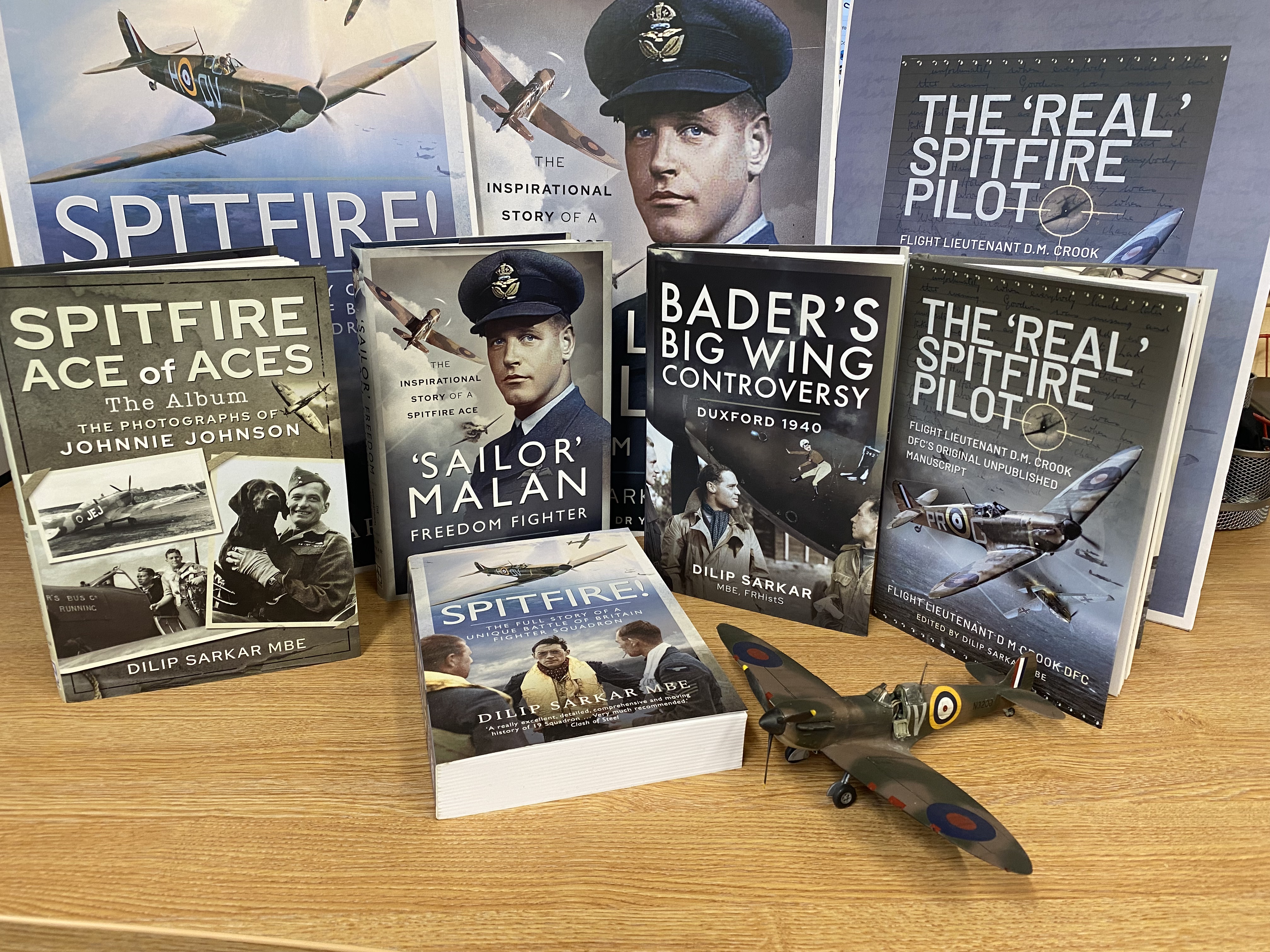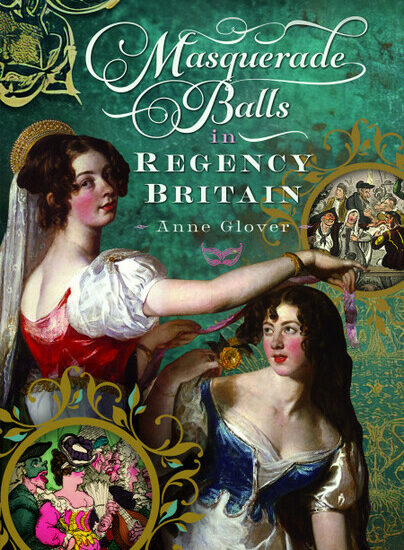World Book Day: A Masterclass with the Prolific Author and Historian Dilip Sarkar MBE…
For World Book Day, we will be sharing a series of masterclass posts from various Pen and Sword authors. Our first post is from the Prolific Author and Historian Dilip Sarkar MBE.

Q: You have been a well-known and highly respected name in historical publishing for over thirty years, your formidable body of work well-received globally. Made an MBE in 2003 for services to aviation history, and elected to the Fellowship of the Royal Historical Society in 2006, in recognition of your original contribution to the scholarship, you have exhibited internationally and have now written approaching 60 books. This must have been, and still be, quite a journey; where did it all start?
My mother and our neighbour inspired my passion for history, and my uncle made large-scale flying models, which fascinated me, especially, of course, the Spitfire. Growing up in the 1960s, the Second World War was still omnipresent, with family members and friends, neighbours, teachers and more all having served, and as a generation we were raised on a relentless barrage of war related toys, models, comics and films. I became obsessed with the Second World War story from an early age, and the Battle of Britain period in particular. When I was ten, my father, a Quaker, showed me some aircrew graves, which was a lightbulb moment: this was not a child’s game or war film – this was real life. Here were pilots, navigators and air gunners, many from Commonwealth countries and a long way from home. Deeply moved, I suddenly realised that war was not a glamorous and romantic thing but actually a human tragedy. I wanted to know what happened to these young men, what they looked like, so that is really where it all began.


Q: Your professional life started as a police officer – how did the historical research happen?
As a teenager, I started researching the history of local presentation Spitfires and became involved with aviation archaeology, but I was a bit of rebel without a cause in my youth, didn’t study, wasted a private education, and aged twenty drifted into the police on account of my father having been a magistrate at the time. I found that I enjoyed investigative work, taking statements and interviewing people, and extracting all the relevant facts to produce a set of circumstances regarding a case for the court. In truth, I cannot think of a better apprenticeship for a researcher. This taught me the vital importance of detail, sticking to the facts and evidence, not pre-conceived theories or supposition, and these things have always underpinned my work. The police also imbued in me a ‘can do’ attitude and a strong work ethic, so the importance of those early years policing still very much influences how I approach things.
In 1985, I was posted to Malvern in Worcestershire, and my friend, Andy Long, told me that a Spitfire had crashed just outside the town in 1941 owing to an engine fire; the pilot, a Polish Battle of Britain pilot, Flying Officer Franek Surma, baled out only to be reported missing in action six months later: lightbulb moment number two. We started researching the history of the aircraft, R6644, identifying pilots who had flown the aircraft and piecing together their stories and that, of course, of Surma himself. We found and interviewed survivors, and eye-witnesses to the crash, and set up the Malvern Spitfire Team to recover the remains of the Spitfire and erect a memorial to Surma, because although he was ultimately killed elsewhere, as he remained missing we felt a personal commemoration was appropriate. This became a massive project, appended to a major exhibition at a Worcester museum before touring the country.

Q: So, how did the writing and publishing begin?
I am a compulsive writer, my first published piece being an article in a fishing magazine when I was sixteen, and obviously it was clear that the R6644/Surma story needed writing up and sharing. Some of the stories involved I started publishing as magazine articles, in FlyPast and After the Battle, but In 1988, I was badly injured during a violent arrest and following an operation was off work for six months. That time I used constructively and wrote the book, The Invisible Thread: A Spitfire’s Tale – which was rejected by every publisher I sent it to (which, considering the mass of unique first-hand accounts and unpublished photographs was extremely short-sighted of these companies, none of which are still around, which is perhaps significant!). So I shelved that book and wrote another, a history of 19 Squadron during the Battle of Britain period, focussing on the tragic story of the exceptional squadron commander, Squadron Leader Brian Lane DFC, who was reported missing in 1942. This was published in 1990 via a specialist publisher’s ‘author sponsored scheme’, which basically means the author funds the whole thing. By then the research and writing had become my absolute passion, however, so in 1992 I decided to set up my own publishing operation, Ramrod Publications, and produce The Invisible Thread. A huge success, things snowballed from there, really, although I remained a serving police officer and with a young family it was far from easy. Everything I learned about publishing was from experience, on the job – and at first it was risky, because I had no sponsor or capital, which rather focuses the mind.



Q: Your Ramrod Publications set-up became famous for the most incredible book launches, tell us about that…
When we launched my first book, Spitfire Squadron, at the RAF Museum, Hendon, in 1990, I had all of the surviving 19 Squadron Battle of Britain pilots present who lived in the UK. Enthusiasts flocked to the signing, collecting the pilots’ signatures, so going forward I knew there was a formula there. Every book produced was launched at a huge event attended by some of the most famous RAF fighter pilots, including, for example, Air Vice-Marshal Johnnie Johnson, officially the top-scoring RAF fighter pilot of the war, German aircrew and other wartime survivors, and special guests such as The Hon. Lady Odette Dowding and Lady Bader. Whilst we staged certain events at air shows, my preference was always to operate in the high street, usually at Worcester Guildhall, providing the public, and especially people who would not otherwise be exposed to this kind of thing, a unique opportunity to meet personalities from the pages of history books. It is incredible now, looking back, when today only one known Battle of Britain pilot is alive, to think that at Yeovil in 1994, for example, we had thirty-eight of The Few signing plus Battle of Britain groundcrews and fighter pilots from later in the war. These really were amazing events, to which enthusiasts travelled from the world over. All of this was achieved, by the way, before the internet existed.

Q: What happened to Ramrod Publications?
In January 2001, Air Vice-Marshal Johnson, my great friend and partner in certain areas of business, died, and the following December my father died suddenly, aged sixty-eight, both losses being very depressing and as a result of which my drive evaporated and the spark died. In 2002 I wound up the operation and stepped away from it all.

Q: But clearly far from the end of the story?
Indeed. In 2005, I left the police after twenty-two years to set up Victory Books, along similar lines to Ramrod, but the spark still wasn’t really there, and I no longer felt comfortable holding book signing events because the veterans were of such advanced ages. We produced several titles but it was just impossible to recapture the halcyon Ramrod days, and so because of that and a change in personal circumstances Victory Books was wound up in 2007.

Q: So what then?
In 2008, I went to university as a mature student and single parent, studying Modern History, when Jonathan Reeve, then of Amberley Publishing, contacted me and invited me to write some Battle of Britain titles given that the 70th anniversary was approaching. This I did, and went on to produce about ten books with Jonathan, including the Spitfire Manual, which I understand is Amberley’s biggest grossing title with sales of some 50,000. However, after university I returned to work full-time, setting up and managing a national enforcement related initiative, so my focus shifted away from writing, and concurrently Jonathan, with whom I had worked well, left Amberley, and so life temporarily went off in a different direction.

Q: You have now produced eighteen books with Pen & Sword, with several others queued for release, in addition to working on an apparently endless stream of future titles; how did all this happen?
In 2014 I was working in the Netherlands and visited Arnhem, having always been fascinated by the story of Operation MARKET-GARDEN and the battle for Arnhem Bridge. When visiting the Airborne Cemetery at Oosterbeek, I was again deeply moved and decided to research a book telling the battle through the stories of casualties, which had never been done before. Instead of getting the book commissioned by a publisher, however, I just got about the research and writing for several years, quietly and without any pressure, and when I was ready contacted several publishers, all of whom came to see me and pitched for the work (how times had changed!). Amongst them was Martin Mace, who had founded Britain at War magazine and now works as a Commissioning Editor for Pen & Sword. Martin and I both share formative years in the police service and hit it off immediately. So Arnhem 1944: The Human Tragedy of The Bridge Too Far was published by Pen & Sword to mark the 75th anniversary in 2019 – and we have never looked back! In 2020 I gave up my full-time job, since when I have been able to concentrate exclusively on my writing.

Q: What projects are you currently working on?
I am currently immersed in writing an official history of the Battle of Britain in eight volumes for the Battle of Britain Memorial Trust and National Memorial to The Few, which will be my lasting legacy of around one million words. I am also working on a co-authored project with Steve Goodchild on the 1471 Battle of Tewkesbury, the Wars of the Roses being another great interest of mine, and completely re-writing and updating Guards VC: Blitzkrieg 1940, which covers 1st Guards Brigade during the Dunkirk campaign and in particular the story of Lance Corporal Harry Nicholls’ Victoria Cross. At some stage I also have to get around to writing Missing in Action: Finding the Fallen of the Second World War, so no shortage of projects, just need more hours in the day!

Q: What books have you coming out this year?
A photographic book, Faces of The Few, has just been released, which will soon be followed by Spitfire Faces and Faces of HMS Royal Oak: The ‘Mighty Oak’ Disaster at Scapa Flow, and, at long last, the completely updated Battle of Britain: The Movie, which was originally written by the late Robert Rudhall and first published by Ramrod in 2000. The first two volumes of the Battle of Britain series, The Gathering Storm: Prelude to the Spitfire Summer, and the Breaking Storm: 10 July 1940 – 12 August 1940, will also appear later this year.

Q: What is your working routine, and what is the writing process?
It is vitally important to have a dedicated work-space. My office has always accommodated my archive and reference library, and is full of all kinds of memorabilia connected with my work – all of which generates its own creative atmosphere. The office is separate from the house and so I literally go to work daily, even if my commute is but a short walk up the garden! I am very disciplined about it, and treat my writing as a job, which it is, it’s never been a hobby to me. The Mac is usually fired up well before 0900 hrs and apart from a brief stop for lunch, I work right through until at least 1500 hrs, by which time concentration is beginning to lapse. Then I will attend to other matters, emails, responding to requests for blogs etc, and have a leg-stretch.
You must be intimately familiar with a wide range of sources and aware of the latest publications and research on whatever the subject matter is. Writing history is like an inverted pyramid, starting at the top with a broad context, focussing right down to the minutia – and context is everything. Never, ever, fall into the trap of having a preconceived theory and shaping the evidence to fit accordingly. The actual evidence must drive the investigation and therefore narrative, which is often a fascinating journey in itself, full of surprises. Use plain English, wherever possible, and just let the words flow. Ideally, 99% of research will have been completed before the actual writing begins, so I know the direction things will go in, and how the book will be structured. Apart from a brief book proposal for Martin to get a title commissioned, I don’t plan things out on paper, it’s all in my head and very often the narrative just follows its own course.

Q: How easy is it for aspiring authors to get into print?
There are more routes available today for aspiring authors to get published, not least because of the digital age: image scanning, word processing, digital photography and design software has made book production accessible to everyone from their own PC. Print on demand also means that there is no significant financial outlay or need to produce, say, a thousand books in one go, which is expensive and requires storage space. Such self-publishing has a place but beware: the business side can take over, leaving little time for further research and writing. Accurate records must be kept, invoices, for example, and sales leger needs to keep on top of late trade payers. Then, there’s packing and posting books, and much more besides.
If you have an idea and the self-publishing idea doesn’t appeal, approach a publisher. Get a copy of the Writers’ and Artists’ Yearbook, which basically explains everything you need to know and lists all publishers in the UK, detailing their areas of interest. Make a list of those publishing in the area of your subject, and send in a book proposal. This only needs to be a side of A4, if that, at this stage, not war and peace. Outline the proposed book, paying attention to its Unique Selling Points (USP) – what makes it especially interesting and marketable? What are the hooks on which to hang media interest and stories? Does the book contain previously unpublished material, including illustrations? These are the main things to consider, and in a covering letter or email explain your experience – don’t be put off if a first-timer, everyone has to start somewhere, and unless you’re JK Rowlings forget all about having an agent, just isn’t necessary. Publishers are keen on authors with whom they can have an ongoing relationship and whose profile, therefore, can be increased over time – so if you have other ideas for future projects, say so.

Q: How important is it to find the right publisher?
In a word: crucial.
Over the years I have written for various publishers, including Haynes, and have very happily fallen in with Pen & Sword. The author-support is first-class, the production process smooth and efficient, the cover designs excellent, nothing not to like. The most important thing for an author, I think, is to have a good working relationship with your Commissioning Editor. Martin and I are totally like-minded, often coming up with the same ideas, and are equally enthusiastic about always pushing our projects forward, relentlessly.
Q: How important is promotion?
You can write the best book of all time, but it’s a pointless exercise unless supported by a robust promotional mechanism and campaign. Social media has made self-promotion more accessible and convenient, but there’s quite an art to it. Also be prepared to get yourself out there, speaking, giving presentations, talking to the media, pushing yourself forward – because if you don’t, nobody else will.
In my experience many authors, especially newcomers, have completely unrealistic expectations of their publisher, particularly regarding promotion. Whilst publishers can assist with press releases and signposting media contacts to your work, authors must be prepared to be pro-active. This is something I have always understood and invested much time and effort in, and the importance of this cannot be under-estimated.
Q: What else would you say is important?
Writing can be a very intense process, requiring great concentration, and so family and friends need to understand and respect this. It can also be very isolating, especially when writing full-time, so the support of family and friends is vitally important. There also has to be work-life balance, something not always easy to achieve.

Q: Do you have any other interests?
I certainly do, and am not at all one-dimensional! In the past I was a club cricketer but too old for that now, and was involved in Wars of the Roses battle re-enactments for some years, clad in plate armour from head to toe! I have always been a keen angler, with my own stretch of the river Severn near Worcester, and like nothing better than roaming the banks of the river Wye in winter, searching for the big pike I fish for. My partner, Sue, who is a retired detective chief inspector and all-round legend, and I do a lot of walking, hills, mountains, getting out in the countryside, and in the warmer months we both love snorkelling off the south coast. I am also a scuba Rescue Diver and in years past dived many deep shipwrecks, including the German High Seas Fleet at Scapa Flow, although these days I prefer the warmer waters of the Red Sea and shallow shore diving off the Dorset coast. We also enjoy travelling and are looking forward to a forthcoming trip to Malaysia and New Zealand – as Sue says, ‘Loving life!’


Q: Finally, what words of advice would you give, on World Book Day 2023, to aspiring authors?
Don’t overthink it. Books don’t write themselves, and nobody else can do it for you – so just get on with it – and never, ever, give up!

……………………………………………………………………………..
Commissioning Editor’s Thoughts
I feel I should add a short piece on what it has been like working with Dilip as his publisher. Before my first contact with Dilip I knew him only by reputation, which was, of course considerable. What I did not know was how he would draw me into his fascinating subjects and his engaging writing. Since that initial contact I have spoken or written to Dilip countless times, and I confess to being hooked on our discussions. Together, we have been able not just to dig down to uncover so much previously unpublished material, but also to present this to readers in a highly accessible fashion.
Of course, to many people reading this I am preaching to the converted; some, though, may not have encountered Dilip’s work – in which case they have much to look forward to! In particular, I have to blow Dilip’s trumpet concerning his multi-volume History of the Battle of Britain. This will be the definitive story of one of the most significant events of the Second World War. While there appears to be an almost insatiable appetite for this subject, Dilip’s series will satisfy the most voracious of history buffs. I have little doubt that all those interested in that Spitfire Summer of 1940 will mount each volume on his or her bookshelf with pride.
This series, magnificent as it may be, represents only a fraction of Dilip’s body of work. So detailed and absorbing are his scores of books, he has attracted a large following of devotees, and I confess to being one. I love developing topics with Dilip as he digs deeper into each subject, inevitably finding myself fully absorbed with his findings.
These shared interests have led, to my surprise, to a real meeting of the minds and I no longer view Dilip as an author whose work I seek to publish, but more of a co-conspirator in exposing the truth where often it has remained concealed and of revealing the real stories of the past. I am fortunate to be the man on the end of the phone when Dilip Sarkar calls.
Martin Mace

Links:
Dilip Sarkar’s books.
Dilip Sarkar’s website.
Dilip Sarkar’s YouTube Channel.


